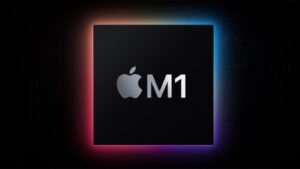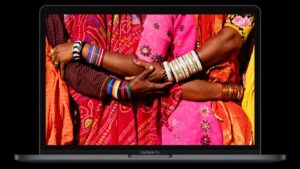

When Apple introduced the transition of Macs to its personal system-on-chips (SoCs) earlier this year, the corporate made it clear that whereas it’s going to present x86 emulation for MacOS applications developed for x86 CPUs, it won’t supply a model of BootCamp with x86 emulation to allow Windows 10 to run on Apple Silicon-based Macs. However in a latest interview with Ars Technica, Craig Federighi, Senior Vice President of Software program Engineering at Apple says that Microsoft has all the things it must make Windows 10 for Arm to run natively on SoCs just like the M1.
Up to Microsoft
“That is actually as much as Microsoft,” stated Federighi. “We’ve got the core applied sciences for them to try this, to run their ARM model of Windows, which in flip after all helps x86 consumer mode purposes. But that is a choice Microsoft has to make, to carry to license that expertise for customers to run on these Macs. But the Macs are actually very able to it.”

Being the main provider of enterprise and productiveness software, Microsoft is presently creating its Workplace suite for Arm-powered Macs. That version of Workplace will run natively on these programs, which implies that Microsoft is aware of how one can construct software for the most recent Macs. The latter can after all run lots of the working system or purposes developed for 64-bit Arm architectures. Microsoft has a model of Windows designed for Qualcomm’s Snapdragon and different ARMv8 SoCs, so doing one thing related for the brand new Macs ought to be fairly potential. There are a selection of uncertainties although.
As a way to make Apple Silicon-based Macs supply the identical features and efficiency in Windows and MacOS, Microsoft might want to make Apple’s IP, together with GPU, neural engine, and special-purpose accelerators, work in Windows, which requires appropriate APIs (software programming interfaces) and drivers. Apple’s MacOS completely makes use of Steel API for graphics processors, which is why Apple’s GPUs are developed with Steel in thoughts. There are a number of methods to make Apple GPUs work underneath Windows, however at current it’s unclear what Microsoft can do with Apple’s {hardware} when it comes to APIs and drivers. One other intriguing facet is how Apple’s M1 and its successors will carry out in Windows. Preliminary benchmark outcomes of the most recent Macs primarily based on the M1 present that the chip can beat its x86 rivals, albeit in MacOS and in choose purposes/workloads.
Windows on Arm on Mac?
There are individuals who use Macs for many of their workloads, however require Windows for purposes that aren’t out there for MacOS. Doubtless, Intel-based Macs have gotten fairly well-liked amongst such folks over the last 14 years. For a number of years down the highway, they may probably proceed to make use of x86 Macs, however in some unspecified time in the future, these PCs will get outdated or will merely break down, which is once they must substitute them.


Assuming that Microsoft has everything it must make Windows 10 for Arm work natively on the most recent Arm-based Macs, the query is what does the software big acquire by enabling its working system work on Apple’s {hardware}. Apple controls about 10% of the PC market and the share of Mac customers who want Windows is hardly important, so from quantity perspective Microsoft hardly good points anything tangible.
However making Windows 10 work on Apple Silicon-powered Macs correctly may encourage the market to actively undertake Arm processors for Windows laptops, which can make the platform extra versatile. In the meantime, if Apple’s M1 and its successors can beat x86 CPUs in Windows setting, this will have an effect on the PC market generally and for apparent causes Microsoft goes to wish to be part of it.